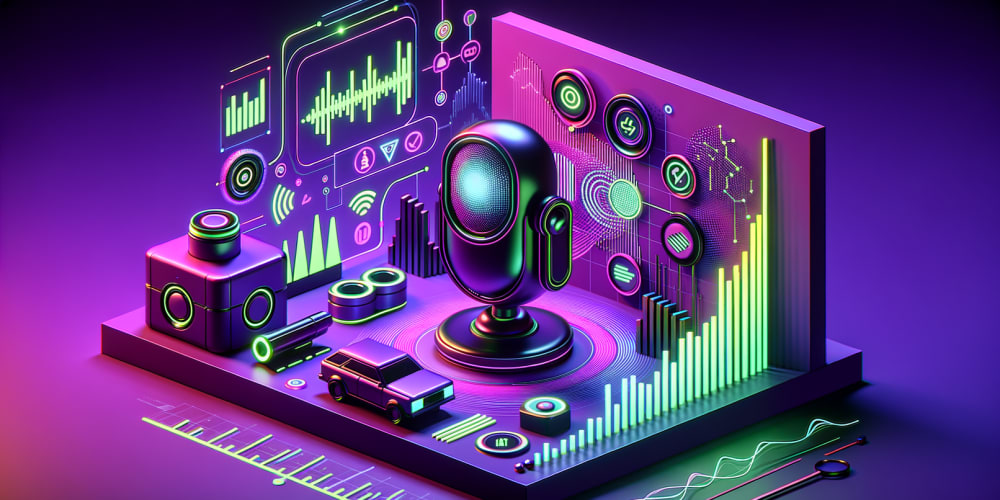Artificial Intelligence (AI) has rapidly advanced in recent years, with computer vision emerging as one of its most exciting and impactful applications. The ability of machines to interpret and understand visual information is transforming industries, from healthcare to autonomous vehicles, and beyond. But how does artificial intelligence work in computer vision? And why is it becoming increasingly essential to consider an artificial intelligence course if you're looking to explore this dynamic field? This article delves into the mechanisms behind AI in computer vision and highlights its real-world applications.
The Basics of Computer Vision
At its core, computer vision is the field of study that enables machines to "see" and make sense of the visual world. This involves the processing and analysis of images or videos to extract meaningful information. AI plays a crucial role in this process by mimicking the human brain's ability to recognize patterns and interpret visual data.
When you take an artificial intelligence course, you'll learn that computer vision systems rely heavily on deep learning—a subset of AI that uses neural networks to process data. These networks are trained on vast datasets containing millions of labeled images, allowing the system to learn and recognize objects, faces, gestures, and more.
How AI is Trained for Computer Vision
The training process for AI in computer vision is intricate and involves several stages. Here's a breakdown of how it works:
- Data Collection and Annotation: The first step in training AI for computer vision is gathering a large dataset of images or videos. These datasets need to be annotated, meaning each image or video frame must be labeled with the correct information. For example, in a dataset used for facial recognition, each image would be tagged with the corresponding individual's identity.
- Feature Extraction: Once the data is prepared, the AI system begins the feature extraction process. This involves analyzing the images to identify important characteristics such as edges, textures, and shapes. These features are crucial for the AI to differentiate between objects and understand the visual content.
- Training Neural Networks: The extracted features are then fed into a neural network—a computational model inspired by the human brain's structure. During an artificial intelligence course, you'll learn that deep learning models, such as convolutional neural networks (CNNs), are particularly effective for computer vision tasks. The neural network is trained on the dataset, adjusting its parameters through multiple iterations to minimize errors and improve accuracy.
- Validation and Testing: After training, the AI model is validated and tested using a separate dataset to ensure it can generalize well to new, unseen data. This step is critical to avoid overfitting, where the model performs exceptionally well on the training data but fails on real-world scenarios.
- Deployment: Once validated, the AI model is deployed in a real-world environment, where it processes visual data in real-time. For example, in a self-driving car, the AI continuously analyzes input from cameras and sensors to make split-second decisions. Applications of AI in Computer Vision Computer vision, powered by AI, has a wide range of applications that are transforming industries:
- Healthcare: In the medical field, AI-driven computer vision is used for analyzing medical images, such as X-rays and MRIs, to detect diseases like cancer. These systems can often identify abnormalities more accurately and quickly than human doctors, leading to earlier diagnosis and treatment.
- Autonomous Vehicles: Self-driving cars rely heavily on computer vision to navigate roads safely. AI processes input from cameras and sensors to recognize objects, detect obstacles, and make decisions in real-time. The accuracy and speed of these systems are crucial for the safe operation of autonomous vehicles.
- Retail and E-commerce: In retail, computer vision is used for a variety of applications, including inventory management, customer behavior analysis, and automated checkout systems. AI can analyze video footage to track product movement and customer interactions, helping businesses optimize operations and enhance the shopping experience.
- Security and Surveillance: AI-powered computer vision systems are widely used in security and surveillance. These systems can monitor large areas, detect unusual activities, and even recognize faces in a crowd. This technology is particularly valuable in enhancing public safety and preventing crime.
- Manufacturing: In manufacturing, AI-driven computer vision is used for quality control and defect detection. These systems can inspect products on the production line with incredible precision, ensuring that only high-quality items reach the consumer.

Given the growing significance of AI in computer vision, gaining expertise in this field is becoming increasingly valuable. An artificial intelligence course can equip you with the necessary skills to understand and develop these cutting-edge technologies. You'll learn about the underlying principles of AI, deep learning, and neural networks, as well as how to apply them to real-world problems.
Moreover, an artificial intelligence course can provide hands-on experience with tools and frameworks commonly used in AI development, such as TensorFlow and PyTorch. This practical knowledge is essential for building and deploying AI models in computer vision and other applications.
Conclusion
Artificial intelligence is at the heart of the advancements in computer vision, enabling machines to interpret and interact with the visual world in ways that were once the realm of science fiction. From healthcare to autonomous vehicles, the applications of AI in computer vision are vast and transformative. As this technology continues to evolve, the demand for skilled professionals in AI will only increase. Taking an artificial intelligence course is a crucial step toward gaining the knowledge and expertise needed to thrive in this exciting field. With the right training, you can contribute to the future of AI and help shape the next generation of intelligent systems.


















